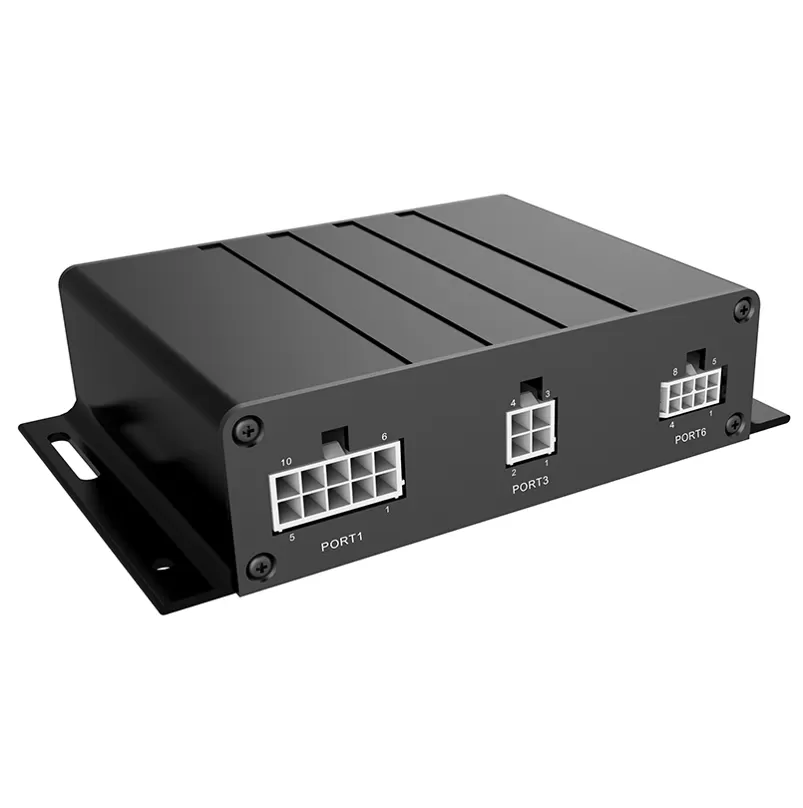Speeding is one of the leading causes of road accidents worldwide. Even a momentary lapse in concentration can result in severe collisions, injuries, or fatalities. With the growing adoption of advanced safety technologies, the Intelligent Speed Limiter (ISL), also known as Intelligent Speed Assist (ISA), is becoming a key tool in improving road safety. Recent regulations in the EU have even made this technology mandatory for all new vehicles. So, how exactly can intelligent speed limiters help reduce traffic accidents, and what should fleet operators, car manufacturers, and drivers know about this safety innovation?

What Is an Intelligent Speed Limiter and How Does It Work?
Before exploring its benefits, it’s important to understand how an intelligent speed limiter works. Unlike traditional cruise control, which simply maintains a set speed, an ISA actively adjusts to road conditions.
Using GPS-based speed limiter technology and traffic-sign-recognition cameras, the system detects the maximum legal speed in a specific area. When a driver exceeds that limit, the system either reduces engine power or sends warnings—visual, audio, or even haptic feedback through the accelerator pedal.
Drivers can override the system by pressing harder on the accelerator, but the ISA reactivates automatically each time the car is restarted. This ensures that, even if temporarily turned off, the speed limiter continues to promote safe driving.
Why Speed Limiters Are Critical for Accident Prevention
The link between speeding and accident severity is well-documented, and speed limiters directly address this issue.
Reducing High-Speed Collisions
A smart speed control system prevents drivers from unintentionally exceeding speed limits, especially in areas where quick speed changes occur. By keeping vehicles within legal limits, ISAs reduce both the likelihood and severity of collisions.
Real-Time Alerts and Preventive Intervention
The system doesn’t just act as a mechanical restriction. It also serves as a proactive driver-assistance tool, providing instant alerts when the vehicle is about to exceed the legal limit. This gives drivers time to adjust safely, reducing risky behavior caused by distraction or misjudgment.
The EU Regulation and Its Impact on Road Safety
The EU Speed Limiter Regulation 2024 (based on Regulation (EU) 2019/2044) has made ISA mandatory for all new cars, vans, trucks, and buses. From 7 July 2024, even unregistered cars already in dealerships must be retrofitted with speed limiters before being sold.
The European Commission expects this move to reduce collisions by up to 30%. According to the European Transport Safety Council (ETSC), the combined use of speed limiters and other safety systems could prevent 140,000 serious road injuries by 2038 and help achieve the EU’s “zero road deaths by 2050” vision.
For fleet operators, this regulation underscores the importance of adopting smart speed limiter solutions not just to stay compliant, but also to protect drivers, cargo, and brand reputation.

Common Concerns and Technical Challenges
While intelligent speed limiters offer clear benefits, some concerns remain.
Drivers sometimes find repeated warnings irritating, and early systems occasionally misread traffic signs due to bad weather, vegetation covering signs, or outdated map data. GPS glitches have also been reported, causing incorrect speed limit detection in some areas.
However, the European Commission emphasizes that the ISA is a driver-assistance system—not an enforcement tool. The driver remains fully responsible for adhering to traffic laws. Continuous improvements in GPS navigation linked speed regulation and AI-powered traffic-sign recognition are gradually reducing these issues.
Can You Turn Off or Remove a Speed Limiter?
Under current EU rules, drivers can temporarily switch off the ISA, but it will automatically activate again once the vehicle restarts. Removing or permanently disabling a speed limiter is not only unsafe but could also be illegal, especially for commercial vehicles.
For fleet managers, tampering with factory-installed ISAs can void warranties, increase insurance premiums, and potentially lead to legal liability in the event of an accident.
A Strategic Tool for Safer Roads
Intelligent speed limiters are more than just compliance tools—they are a proactive safety investment. By preventing unintentional speeding, providing real-time alerts, and integrating with other advanced driver-assistance systems (ADAS), they help save lives and reduce the financial burden of accidents.
For fleet operators and logistics companies, adopting smart speed control systems for commercial vehicles can also build trust with customers and regulators, while supporting long-term road safety goals.
Conclusion: Smarter Speed Control, Safer Driving
The adoption of intelligent speed limiters represents a major step forward in road safety. While no technology can replace responsible driving, ISAs offer an effective safeguard against speeding-related accidents.
As regulations tighten and vehicle telematics and compliance become essential in modern fleet management, investing in smart speed limiter technology is no longer optional—it’s a necessary step toward safer, smarter, and more sustainable transportation.
